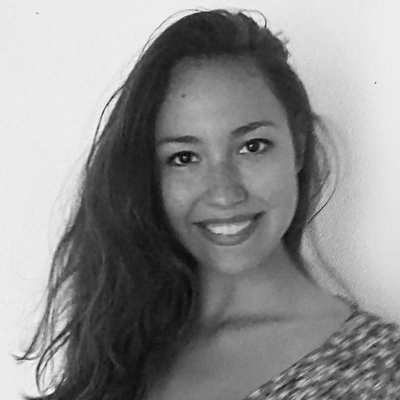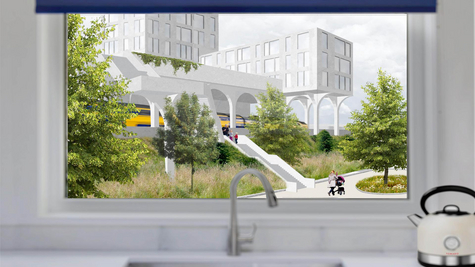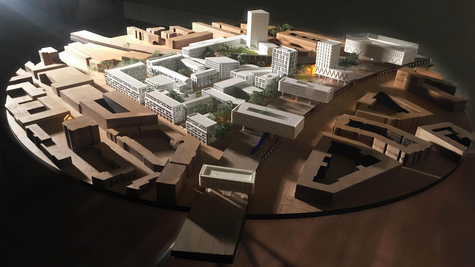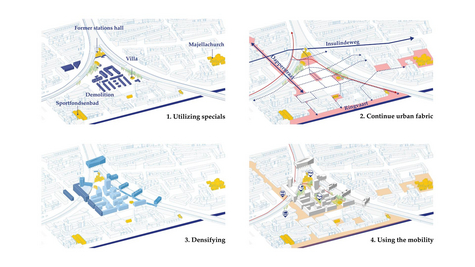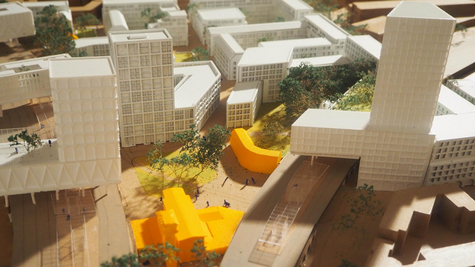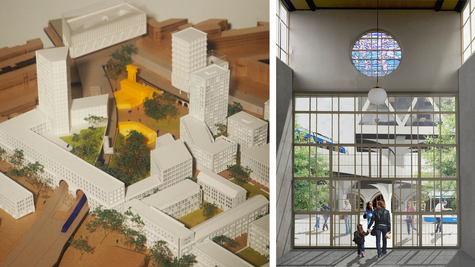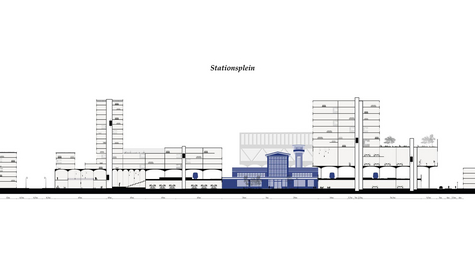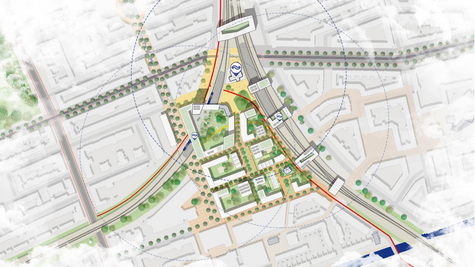Liza van Alphen
Stad onder, boven en tussen sporen
City under, above and between the tracks
Railway zones in the city cut through the urban fabric lengthways. Tracks were originally built on the outskirts of cities, but due to urban expansions, cities began to form on either side of the tracks. Cities are growing even today and are still popular compared to the countryside. The densification of cities and the rise in car use, one of the biggest ‘space consumers’ and polluters in the city, require us to make smarter use of space. By densifying station areas, the mobility system in the city can change. Owning a car will then become unnecessary.
Following the key projects, such as The Hague Central and Arnhem, it’s now time to improve the quality of smaller station areas. Amsterdam Muiderpoort, a so-called ‘vorkstation’ (a station with two tracks that do not run parallel, but come together slightly outside the station) was chosen and elaborated on as location for this graduation project. The double railway tracks have a barrier effect, as a result of which the neighbourhoods beside and between the tracks turn away from the tracks and have an isolated location, also in relation to each other, while the pressure on the housing market in this area is great. This station is also considered to be unsafe by many travellers.
In the graduation project, the station becomes the focal point of the urban district and the urban development has three different layers. Firstly, there are the existing pearls of the spot: the monumental station building is the key player. These pearls are used and are literally given space in the fabric, as a result of which the spots are strengthened. Subsequently, it is important that the urban fabric is patched up. To this end, the connection of the Dapperstraat towards Oostpoort is essential. The Dapperstraat, with the accompanying market, is continued under the track, as a result of which Oostpoort also becomes accessible from the Dapperbuurt and vice versa. In addition to extending this city street, an intricate network towards the Indische Buurt neighbourhood is also important in order to break the isolation. City streets are extended under the tracks, but an intricate network of streets is also built. The third layer is the layer above the track that is essential to activate the underpasses. Access to the buildings above the tracks is gained from the underpasses, which come to life as a result of this. By emphasising the existing high-quality buildings, by continuing the city streets and by constructing buildings above the tracks, the railway zone will become vibrant once again and will be regarded as a whole.
Graduation committee: Riette Bosch (mentor), Bert Dirrix, Elma van Boxel
Additional members for the exam: Maud Aarts, Rein Geurtsen
